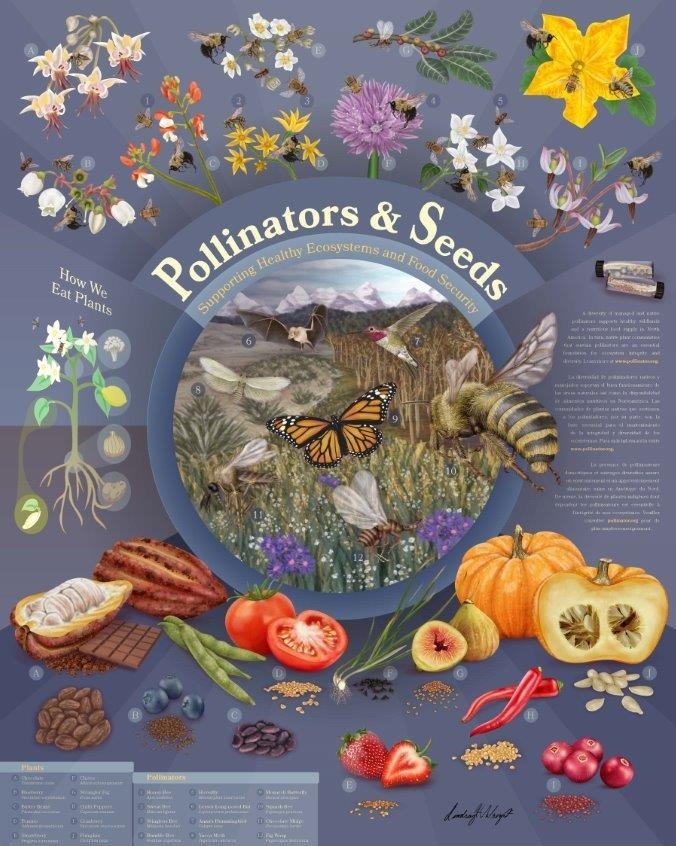Pollinators and Seeds
A diversity of managed and native pollinators supports healthy wildlands and a nutritious food supply in North America. In turn, native plant communities that sustain pollinators are an essential foundation for ecosystem integrity and diversity.
Learn all about the plants and pollinators below.
Download PosterPollinators and Seeds
A diversity of managed and native pollinators supports healthy wildlands and a nutritious food supply in North America. In turn, native plant communities that sustain pollinators are an essential foundation for ecosystem integrity and diversity. Rebuilding native plant communities after rangeland fires, the spread of invasive species, hurricanes, floods, and severe drought requires seeds that fit the climate and geography to ensure the species longevity. As we restore and rehabilitate these habitats, pollinator health will increase through a diverse food supply of pollen and nectar. Healthy pollinator populations will ensure productive crops and the food security necessary in the 21st century.
The Plants
Theobroma cacao (Chocolate)
Evergreen tree that has thick dark gray-brown bark. Flowers have five petals that are white-yellow in color with dark purple bands. Flowers in the wild can have up to 75 different aroma ingredients. Fruits shape can vary but is commonly oblong with 10 furrows but only five are prominent.
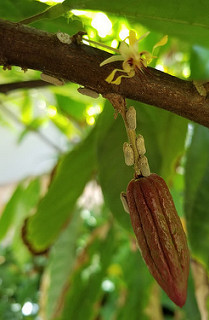
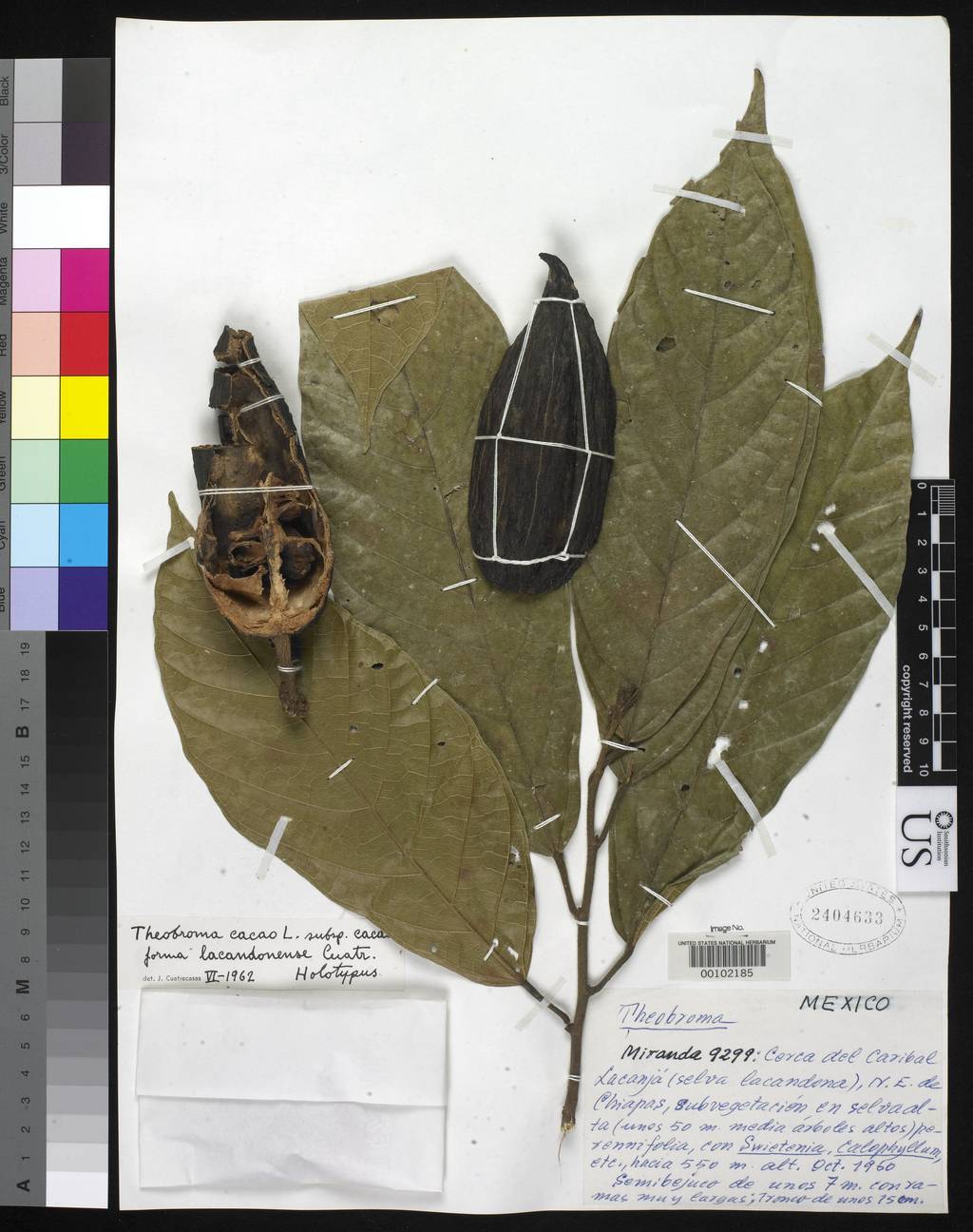
Geographic Distribution: Native distribution from southeastern Mexico to the Amazon basin.
Habitat: Found in forests but often cultivated.
Pollinator: Small insects including midges, especially Forcipomyia quasiingrami and Lasiohela nana. Others pollinating species include ants (Crematogaster spp.), and wild bees.
Mature Height: 12 m
Phaseolus coccineus (Butter Beans)
An annual herb or vine that climbs. The petals are either scarlet or white in color. Flowers either have four or five petals. One petal is a suborbicular banner petal, wing petals are narrow, and the remaining two petals are fused to form a keel. Leaves are alternate with trifoliate leaves that are triangulate to lanceolate.
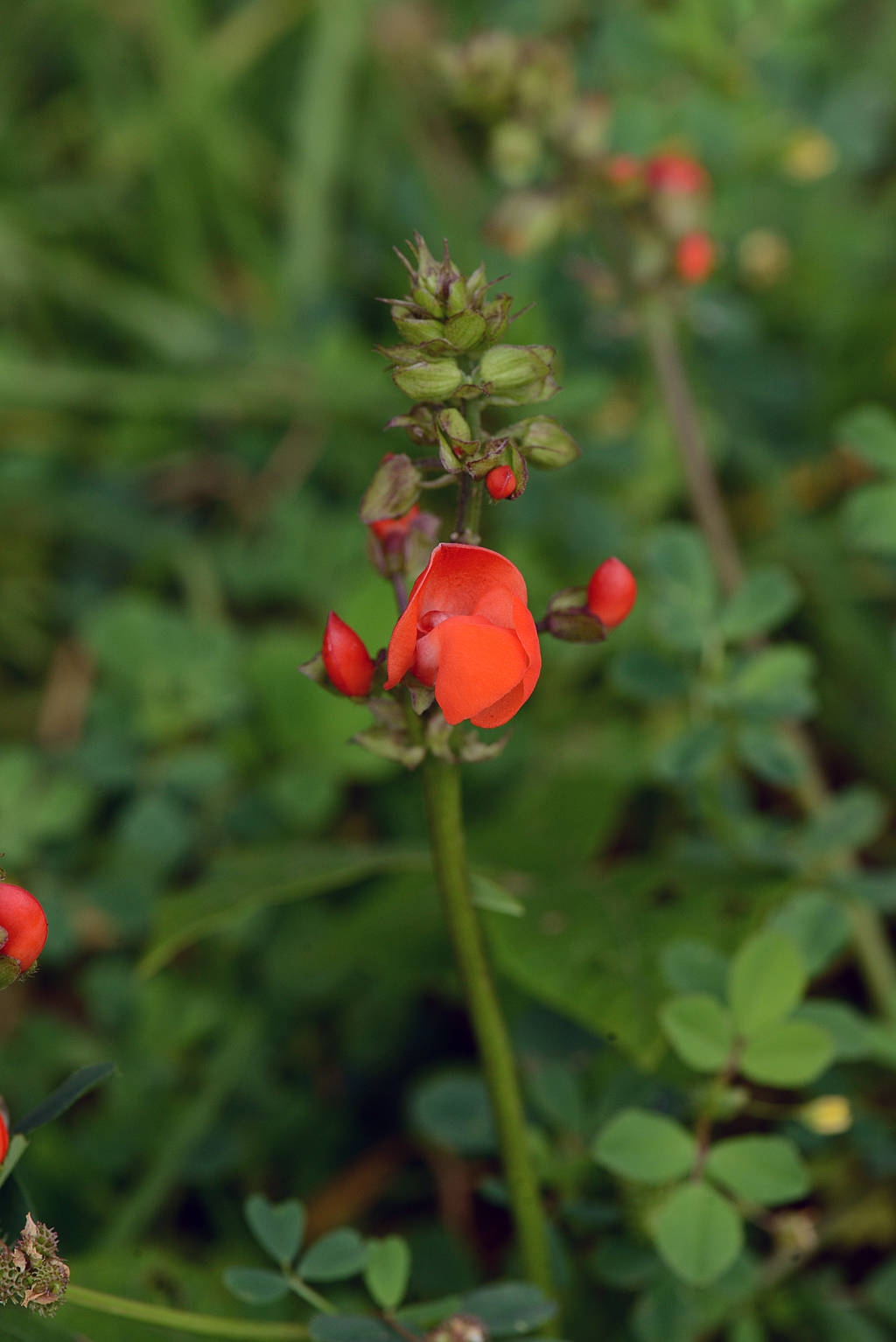
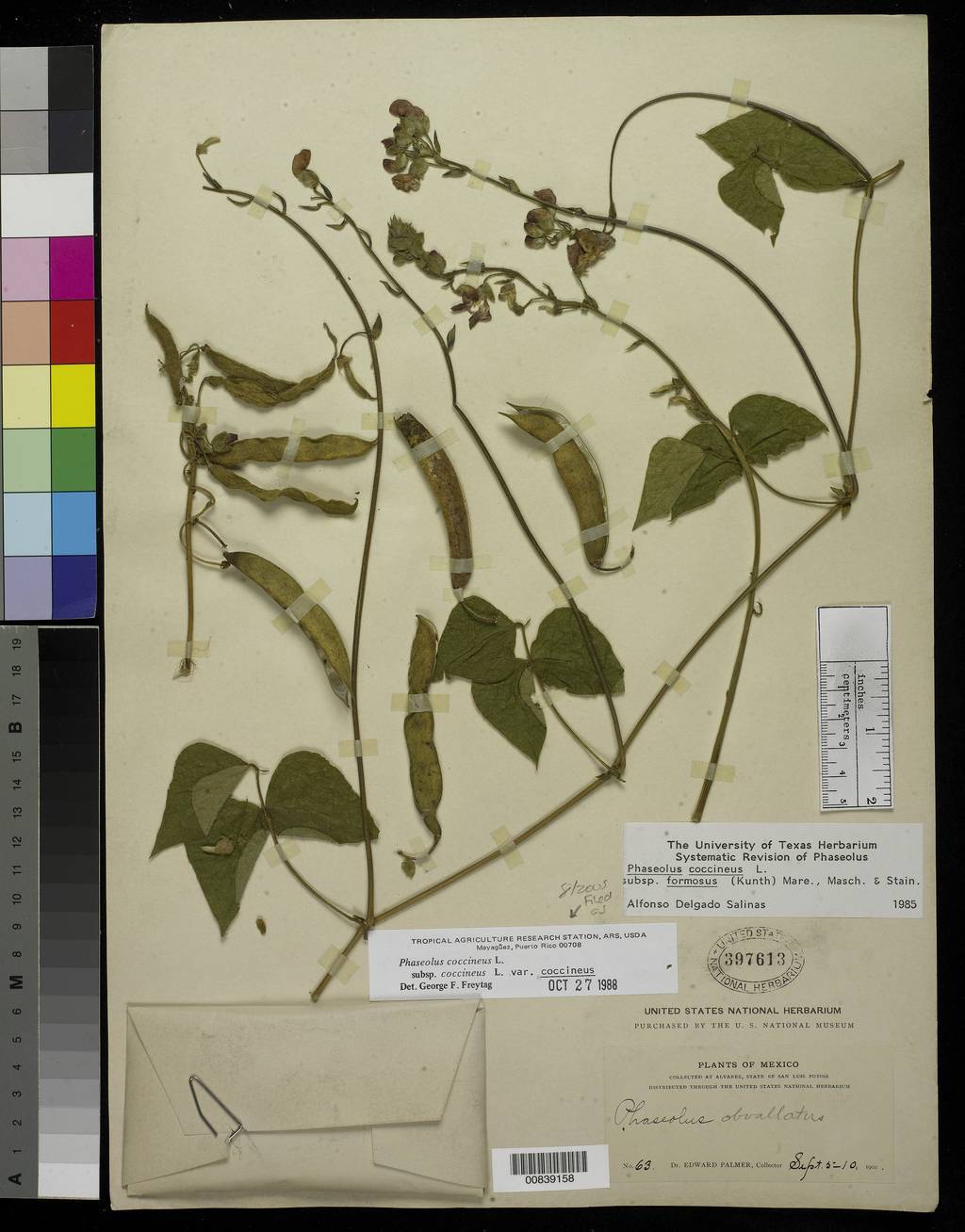
Geographic Distribution: This perennial vine is native to the mountains of Central America. It has been domesticated for more than 2,000 years. Wild P. coccineus occur mostly at mid-high elevations (1,000–3,000 m), from northern Mexico (Chihuahua) to Panama.
Pollinator: Attracts hummingbirds, butterflies, and bees
Bloom Period: June to October
Ficus aurea (Stranger Fig)
Evergreen trees with gray smooth bark. Branches are yellow ovate to oblong with a leathery feel. Flowers are in syconia which are usually paired. Syconia are red or yellow and obovoid in shape. The fruits of strangler figs are edible (raw) and have been eaten by indigenous peoples of Florida and settlers. The latex of the plant was processed into chewing gum by southern Florida Indian tribes. It is also said that the indigenous tribes made a poultice from the inner bark for treating sores and cuts.
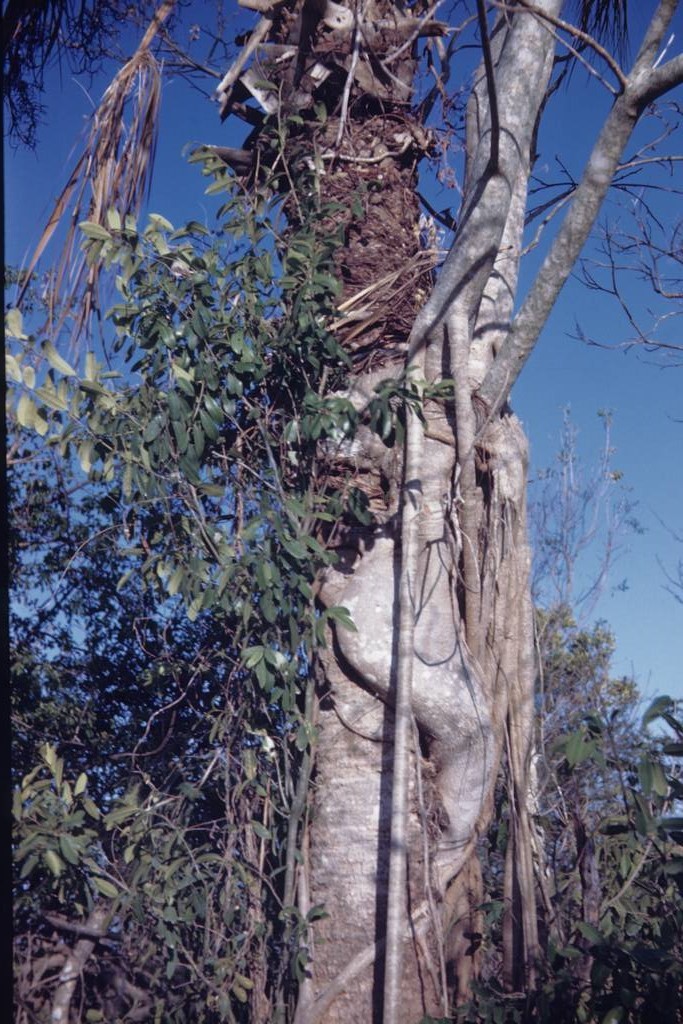
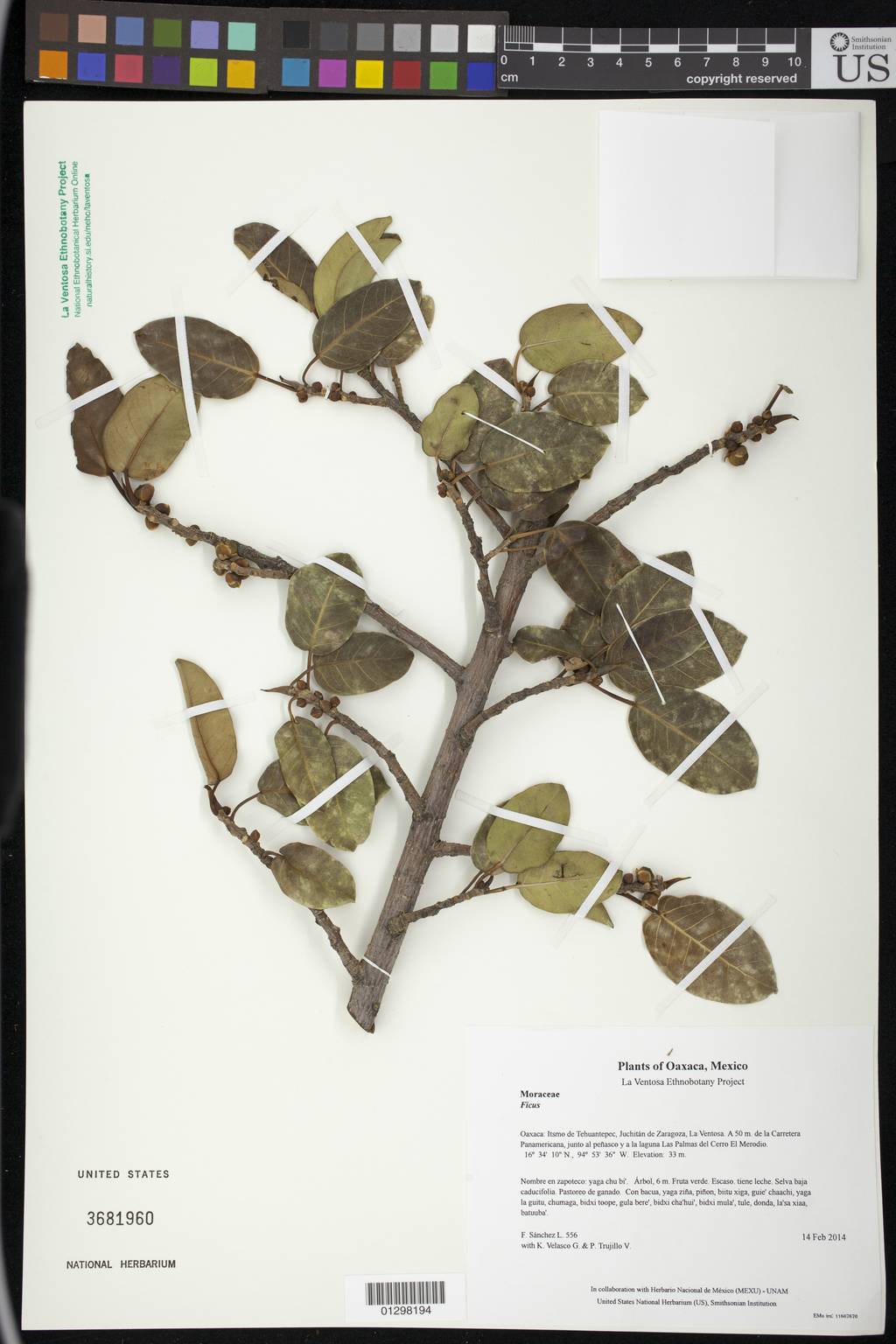
Geographic Distribution: Native to Florida, Mexico, and the Caribbean.
Bloom Period: Spring to Summer
Pollinator: Pegoscapus mexicanus (Fig wasp)
Mature Height: 20 m
Cucurbita pepo (Pumpkin)
Grows as a large annual vine that has large yellow-orange flowers. Leaves are round lobed leaves, often with fine hairy prickles. Fruit is a pepo, which consists of a modified berry with a hard outer rind. Fruits come in a large variety of shapes colors and sizes.
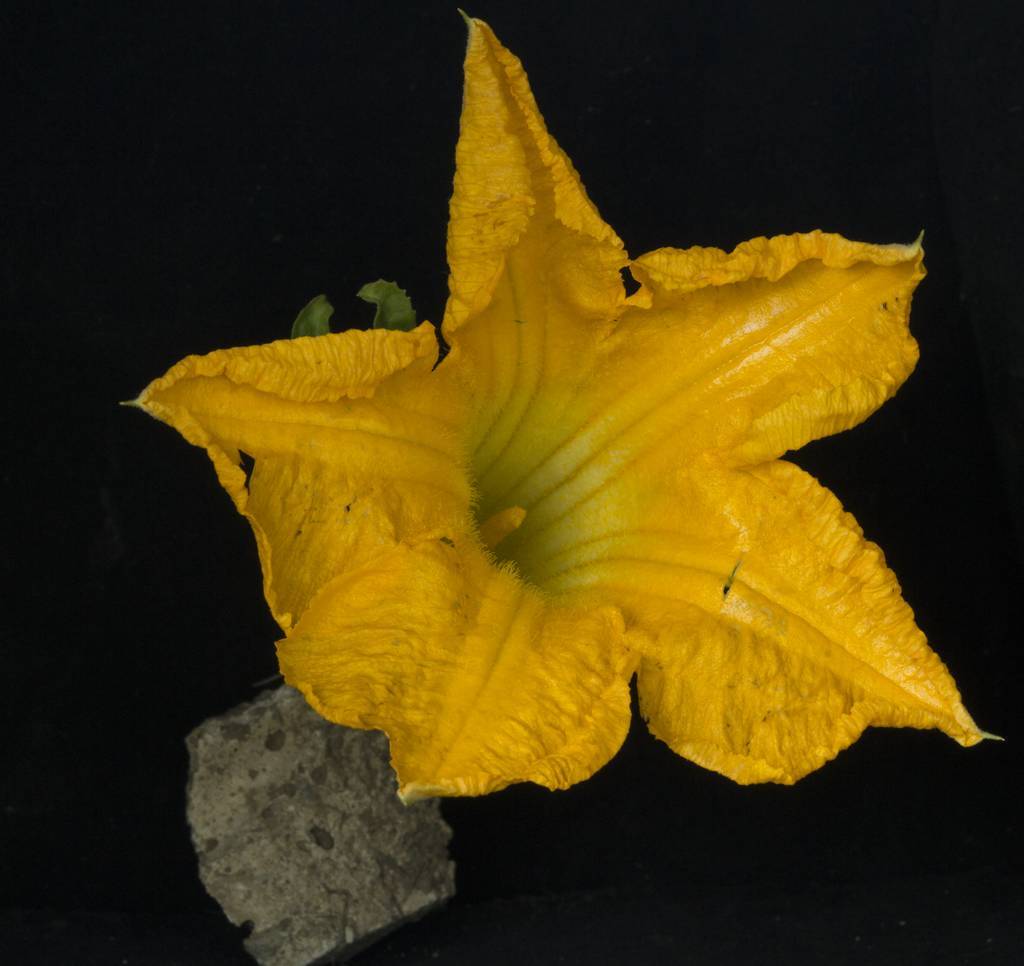
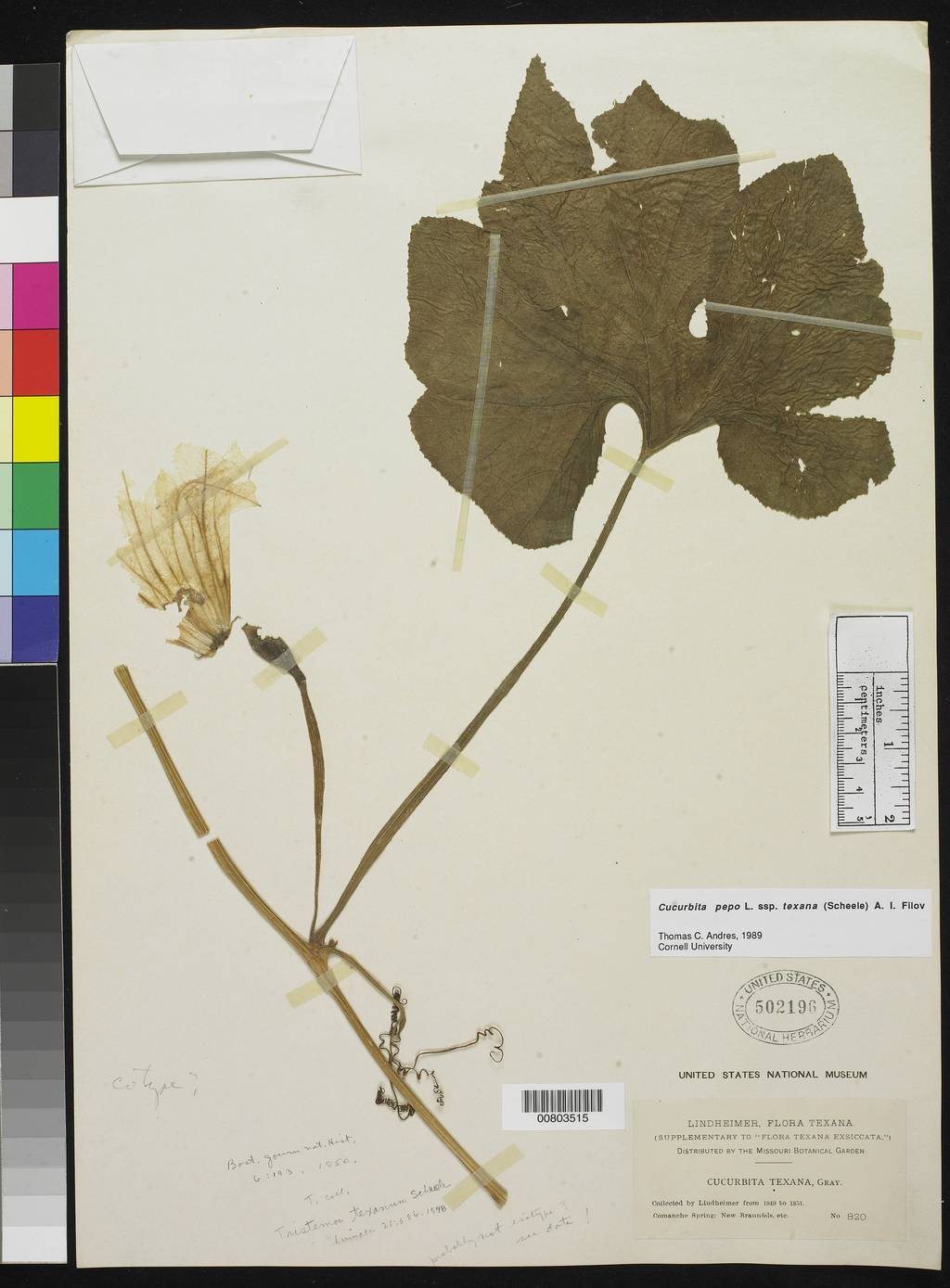
Geographic Distribution: Native to northeastern Mexico and southern USA. It is found in New Mexico, Arkansas, Georgia, Illinois, Missouri, Mississippi, Texas, West Virginia, Kentucky, and Louisiana in the United States. Also found in Ontario and Quebec in Canada and Puerto Rico. Fragments of Cucurbita pepo have been recovered from archaeological sites in northern Mexico dated from 7,000 to 5,500 BC and southwestern USA from 610 AD.
Bloom Time: July to August
Pollinators: Apis mellifera, Bombus impatiens, Bombus penslyvanica, Melissodes bimaculata, Peponapis pruinosa, Xenoglossa strenua
Mature Height: 0.7 m
Allium schoenoprasum (Chives)
Does not produce bulbs but instead sends out axillary shoots after two or three leaves have formed. The shoots are attached to short rhizomes. It forms in dense clumps with narrow, linear, hollow leaves. Leaves range in 15 - 30 cm in height.
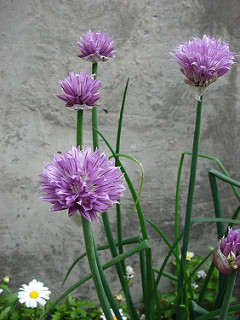
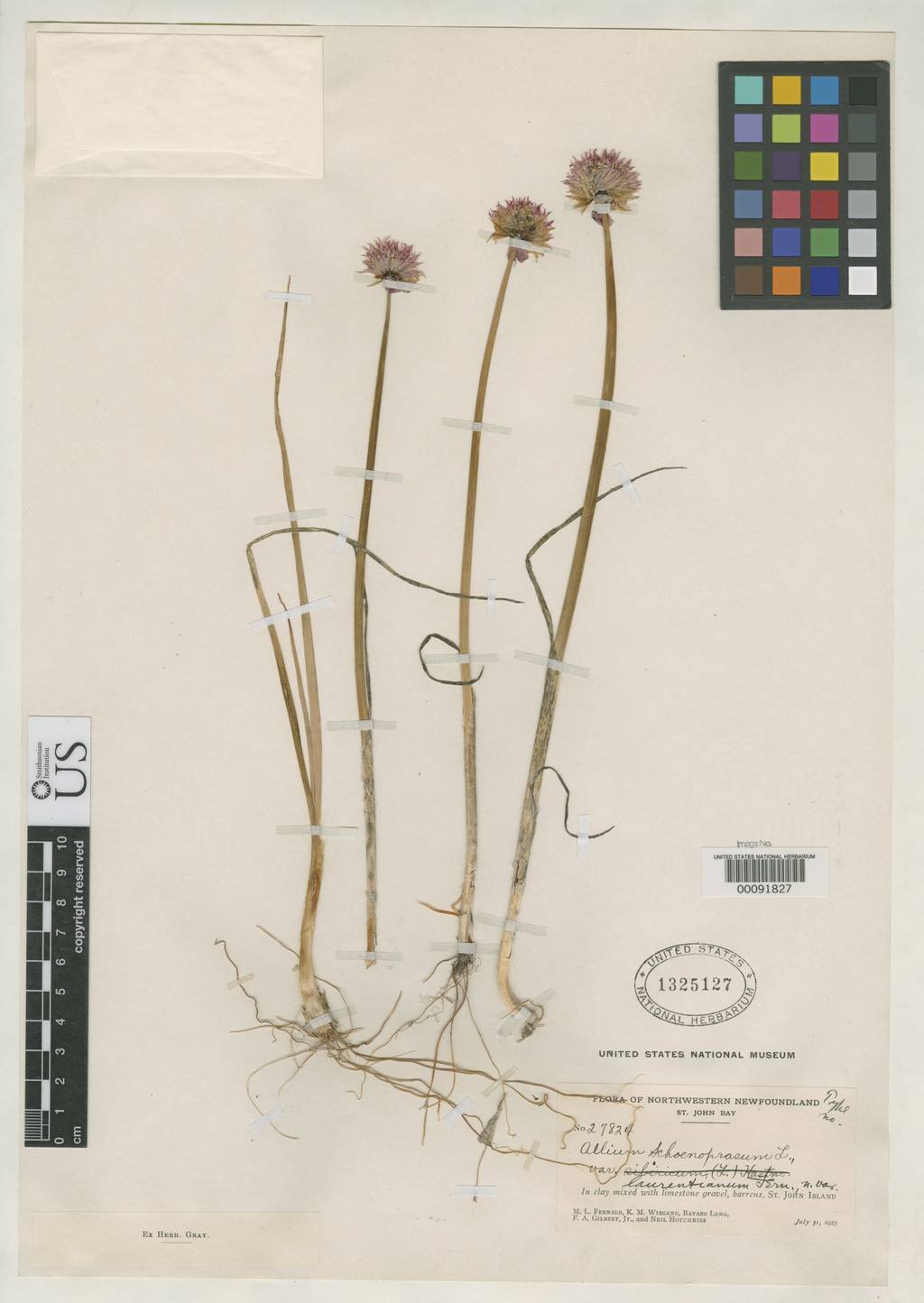
Geographic Distribution: Florida west to New Mexico, Texas north to Illinois; North Dakota
Habitat: Ditches, ravines, depressions
Pollinators: Bees and butterflies
Mature Height: 2 - 3 ft
Bloom Period: April to July
Solanum lycopersicum (Tomato)
An annual herb that is hairy and often aromatic. Leaves are often ovate in shape. Flowers grow in groups and are yellow in color. Petal are narrowly triangular and reflexed. Fruit is a berry that is red at maturity.
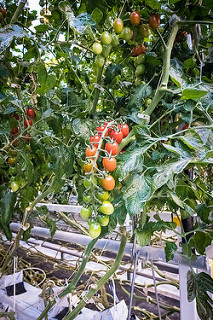
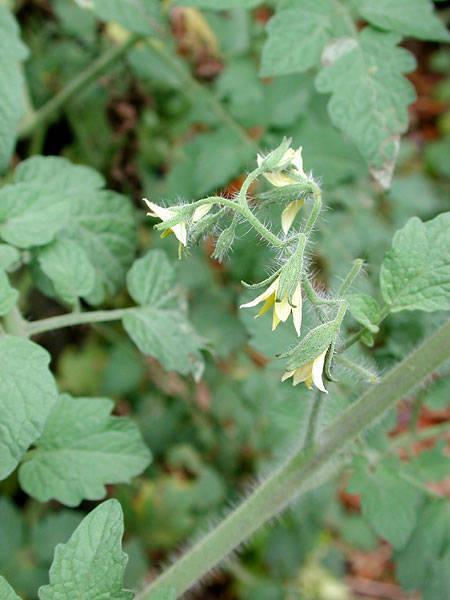
Geographic Distribution: Globally cultivated domestically. Solanum lycopersicum is native to western South America, in the region of Peru and Ecuador. Wild species are still found in these areas as well as farther south in Chile and Bolivia. The first tomato plants to be taken to Europe probably came from Mexico.
Mature Height: 1.5 m
Pollinators: Bees collect pollen through buzz-pollination. Bumblebees, halictid bees.
Capsicum annuum (Chili Peppers)
A shrub to herb with solitary or few-flowered clusters. Flowers are white to green to blue-white and drooping. Leaves are oblong to ovate. The berry can be most often is red but can be orange, yellow, and purple.
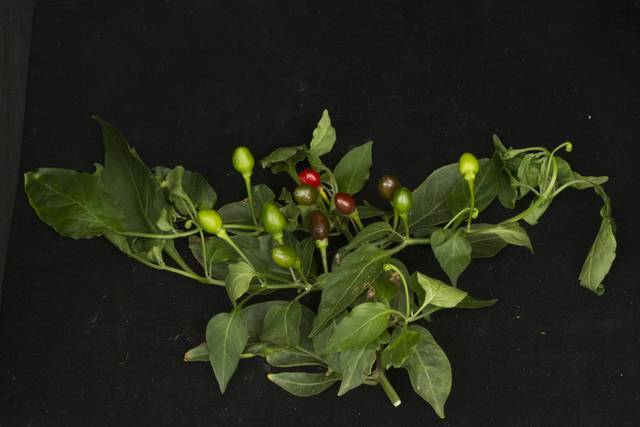
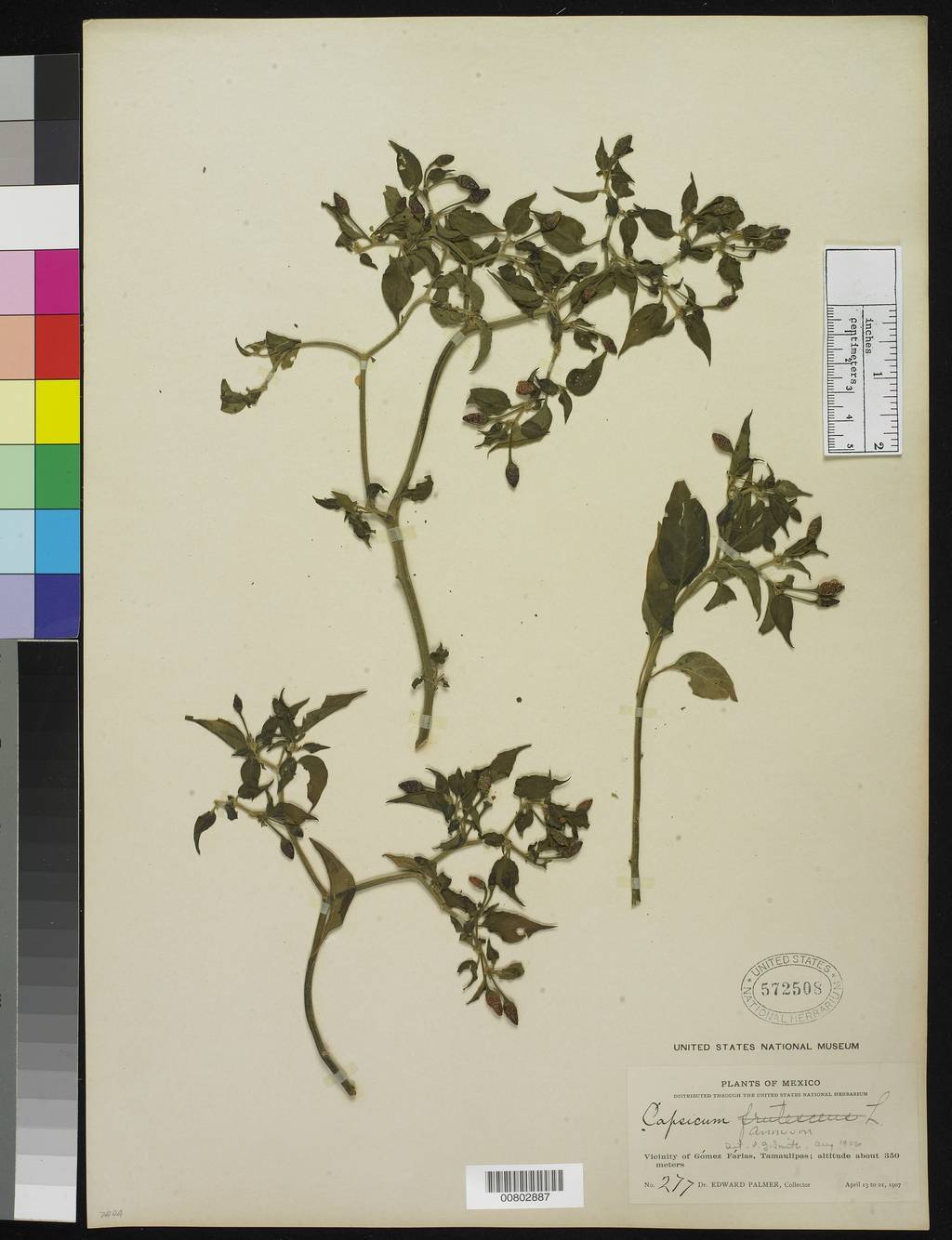
Geographic Range: Originated in southern United States, Central America, South America, and the Caribbean. Domesticated more than 5,000 years ago.
Bloom Time: July to November
Mature Height: 1.2 m
Pollinators: Bees
Vaccinium corymbosum (Blueberry)
A deciduous shrub with older stems with gray-brown bark. Younger stems are green to red in color. Stems have war like dots throughout. The shrub branches upright and in irregular formation. Flowers are white to light pink and urn shaped. They grow in clusters. The fruit is a blue-black berry about 0.15 cm in diameter.
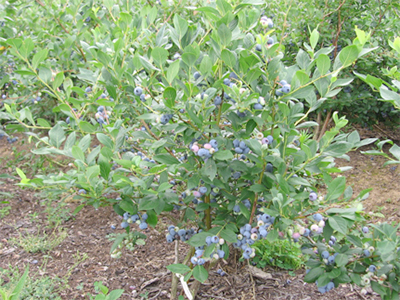
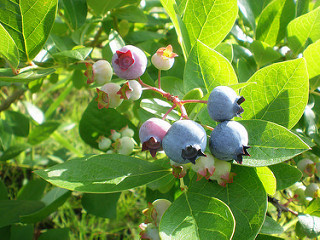
Geographic Distribution: Native to eastern North America. Cultivated in temperate regions of Europe and New Zealand, as well as North America. Found in British Columbia, New Brunswick, Nova Scotia, Ontario, and Quebec in Canada. Distributed from Maine southwards to Florida and as far east as Texas.
Bloom Time: May
Pollinators: Bumblebees, sweat bees, and mining bees
Mature Height: 0.3 m
Vaccinium macrocarpon (Cranberry)
A creeping woody plant with slender stems and evergreen leaves. Leaves are elliptic to oblong and up to 2 cm in length. Flowers are pink and bell-shaped. They are found in clusters. Fruits are berries that are bright red when mature. They grow up to 2 cm in diameter.
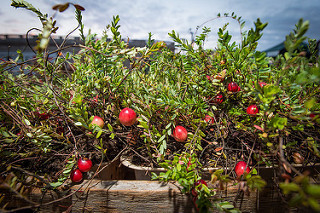
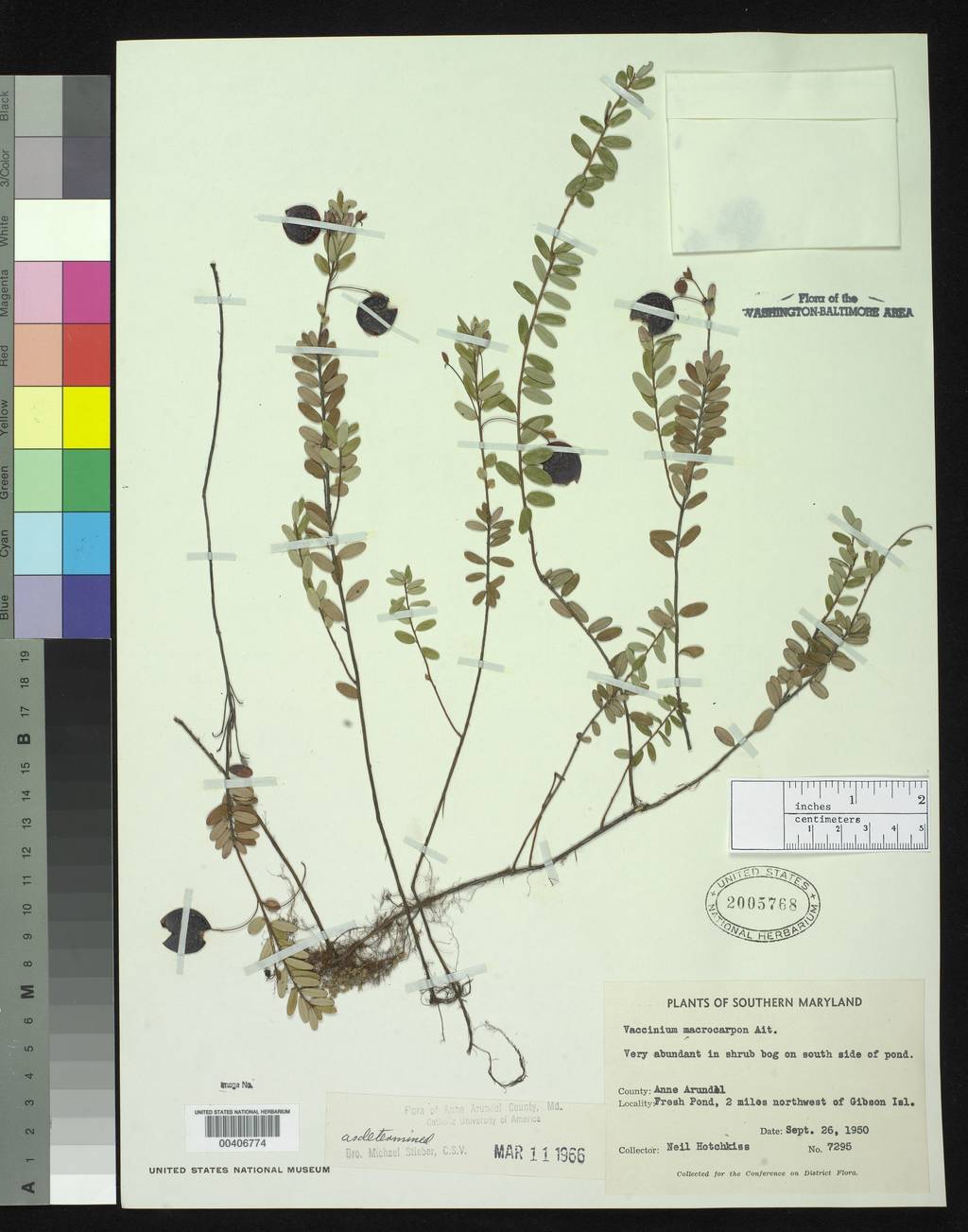
Geographic Distribution: Native to eastern North America. Distributed in British Columbia, New Brunswick, Newfoundland Island, Nova Scotia, Ontario, Prince Edward Island, and Quebec in Canada. In the United States it can be found in California, Connecticut, Delaware, Illinois, Maine, Maryland, Massachusetts, Michigan, Minnesota, New Hampshire, New Jersey, New York, North Carolina, Ohio, Pennsylvania, Rhode Island, Tennessee, Vermont, Virginia, Washington, West Virginia, and Wisconsin.
Bloom Time: May to June
Pollinators: Bees, Bumblebee (Bombus ternarius), Halictus spp. (Lasioglossum spp.)
Mature Height: 0. 3m
Fragaria x ananassa (Strawberry)
A hybrid of F. virginiana and F. chiloensis. It is a short woody plant. There is a basal rosette of leaves that have three coarsely toothed leaflets. It also has rooting runners that form new plantlets at the tips. Flowers are white and have five petals. The fruit ripens to red but is not a true berry. It is considered a fleshy receptacle of multiple fruits.
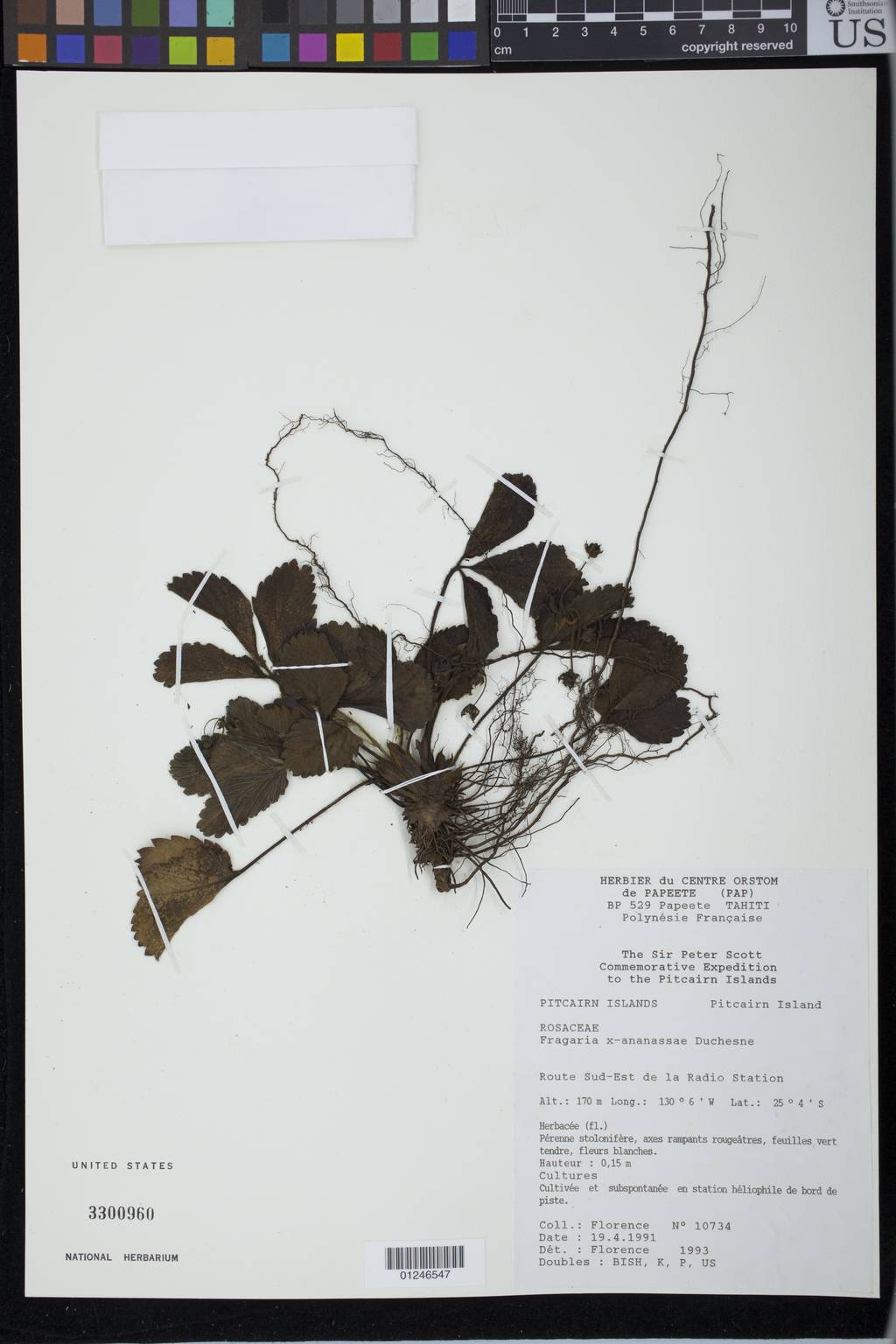
Geographic Distribution: A hybrid cultivar of two wild Fragaria species. The wild progenitors were native to the Americas. Fragaria virginiana, wild strawberry, is native to eastern North America. Fragaria chiloensis, beach strawberry, occurs from coastal Alaska to California and extends into South America and Hawaii. The hybrid originated as an accidental cross in Europe around 1750. It is cultivated in temperate and semitropical regions worldwide.
Bloom Time: Late spring to early summer
Pollinators: Bees, flies
The Pollinators
Danaus plexippus – Monarch Butterfly
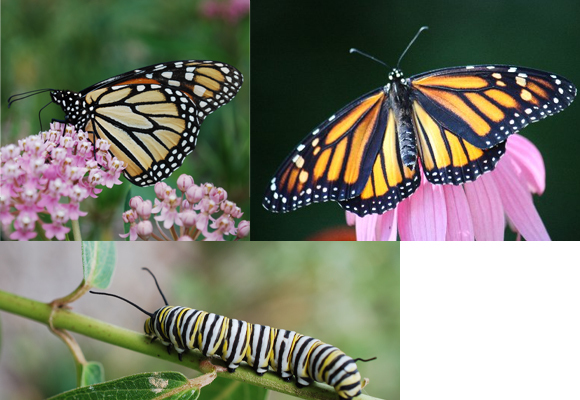
Geographic Distribution: Southern Canada south through all of the United States, Central America, and most of South America. Also present in Australia, Hawaii, and other Pacific Islands.
Habitat: Many open habitats including fields, meadows, weedy areas, marshes, and roadsides.
Size: wingspan: 8.6 - 10.5 cm
Identification: Adult: Upperside of male is bright orange with wide black borders and black veins; hindwing has a patch of scent scales. Upperside of female is orange-brown with wide black borders and blurred black veins. Both sexes have white spots on borders and apex. Monarchs have a distinctive gliding flight with their wings in a V shape. Larva: entire length has alternating black, white, and yellow bands; front and hind ends have a pair of black tentacles projecting diagonally upward.
Plants Commonly Visited: Asclepias, Calotropis, Cynanchum, Gonolobus, Sarcostemma. Apocynum, Syringa, Trifolium pratense, Lantana, Asteraceae, Solidago, Liatris, Vernonia, Coreopsis.
Natureserve Conservation Status: G4-Apparently Secure
Halictus ligatus (Sweat Bee)
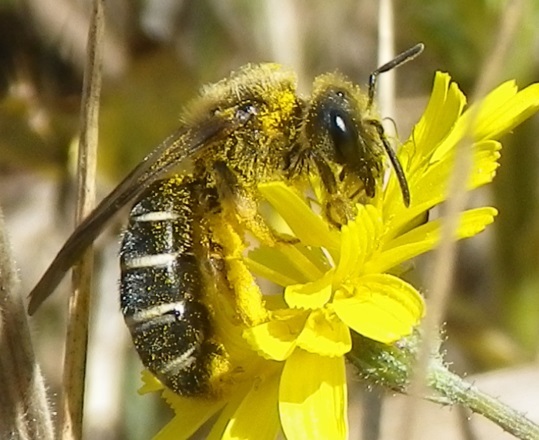
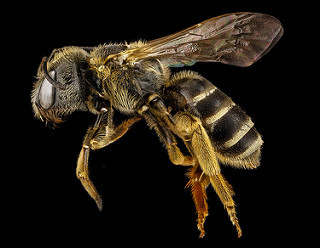
Geographic Distribution: Distributed throughout the United States
Habitat: Mines or burrows nests in the ground
Identification: Length 7 - 10 mm. Females are slightly larger and are entirely black. Males are black, with mandibles, labrum and apical half clypeus yellow.
Plants Commonly Visited: Apiaceae, Asteraceae, Fabaceae and Rosaceae
Natureserve Conservation Status: NNR-Unranked
Peponapis pruinosa (Squash Bee)
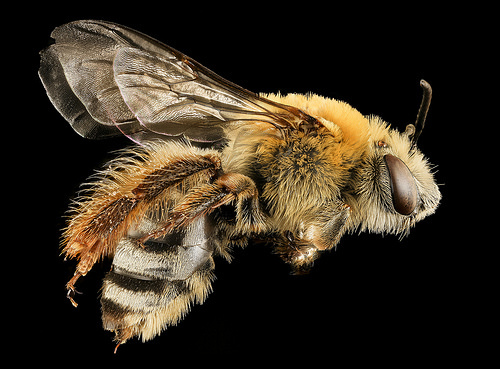
These bees are non-social. Males spend their time flying between squash flowers during the first couple of hours of each day then will sleep in withered flowers as the day goes on. Females will dig their own nest and into the ground, which is a simple vertical tunnel with few loose groupings of chambers.
Geographic Distribution: Occurs from the East to West Coast of the United States. Distributed as far North as Ontario, Canada southwards to Mexico.
Habitat: Crop fields containing squash, pumpkins, and related plants from genus Curcurbita.
Identification: It is approximately 11 to 14 mm in length and abdomen is approximately 4 to 5.5 mm wide. They are black with a coat of yellowish hairs on thorax and head. Abdomen is black with whitish bands.
Plants Commonly Visited: Specializes in squashes and gourds in the genus Cucurbita.
Natureserve Conservation Status: NNR-Unranked
Melipona beecheii (Stingless Bee)
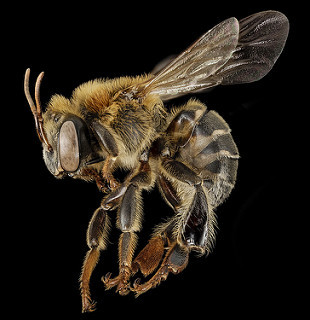
Geographic Distribution: Natural range extends from Mexico to Costa Rica.
Habitat: Tropical lowland forests and second growth habitats.
Identification: Does lack a sting on their abdomen.
Calypte anna (Anna’s Hummingbird)
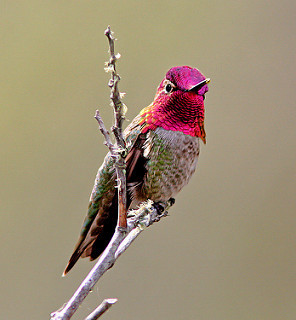
Geographic Distribution: Found along the west coast of North America ranging as far North as British Columbia and as southwards into Baja California. Found in parts of Washington, Oregon, California, Arizona, New Mexico, and Mexico.
Habitat: Commonly found in yards, parks, residential area, eucalyptus groves, riverside woods, savannahs, and coastal scrub.
Size: 10 cm
Identification: Medium sized for a Hummingbird. They have a straight short bill and a broad tail. When perched, the tail extends past the wingtips. Adults: Males have a metallic green and gray body. Their head and throat have iridescent red to pink feathers. Females are metallic green above and gray underneath with small bits of red spotting on the throat. Juveniles: Males will have brightly colored feathers on throat and crown and their tail will be less rounded. Females will be pale brown with no metallic colored feathers on the throat area.
Plants Commonly Visited: Grossulariaceae (currant and gooseberry family), Manzanita, and many introduced species of eucalyptus.
Conservation Status: Low Concern
Pegoscapus mexicanus (Fig Wasp)
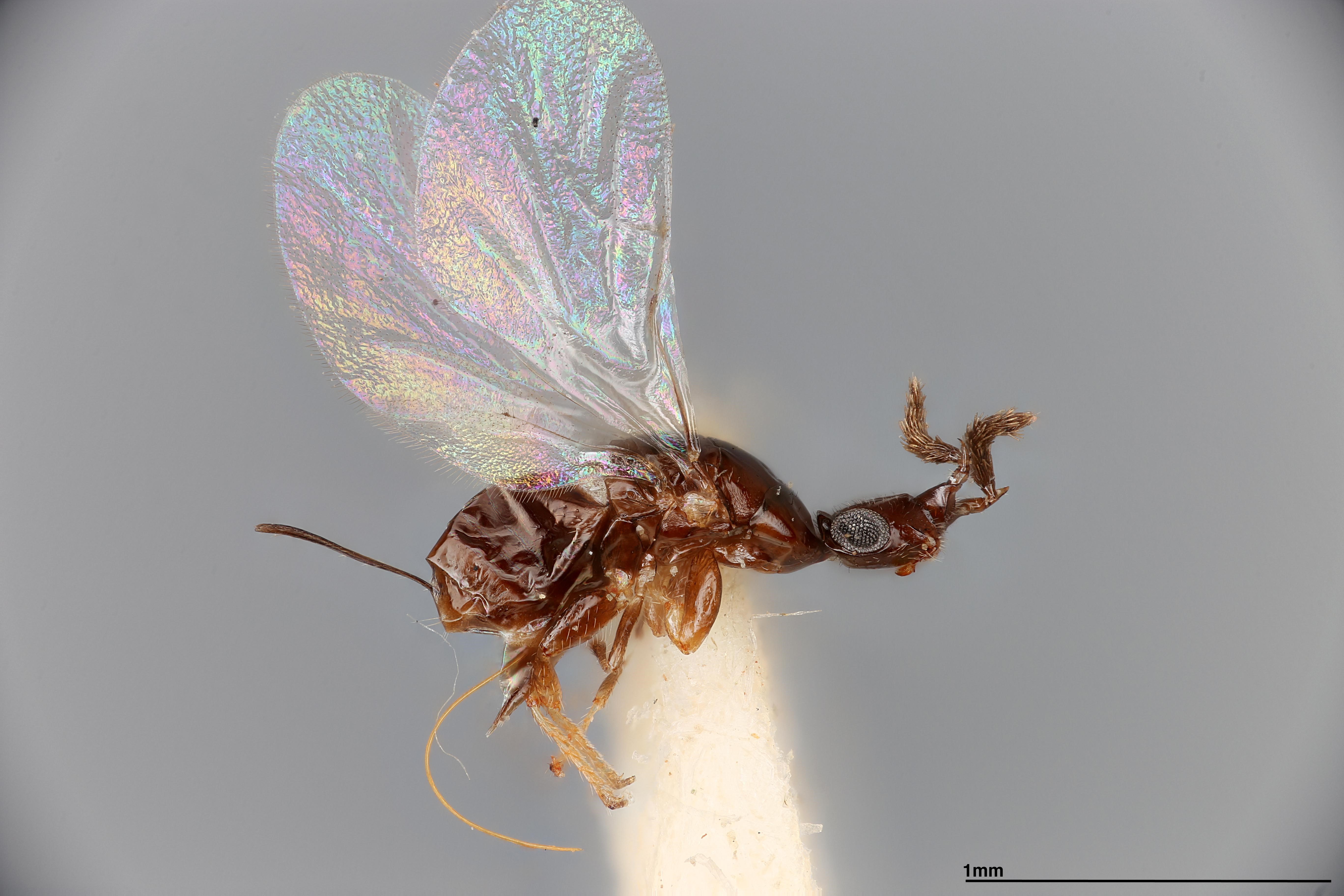
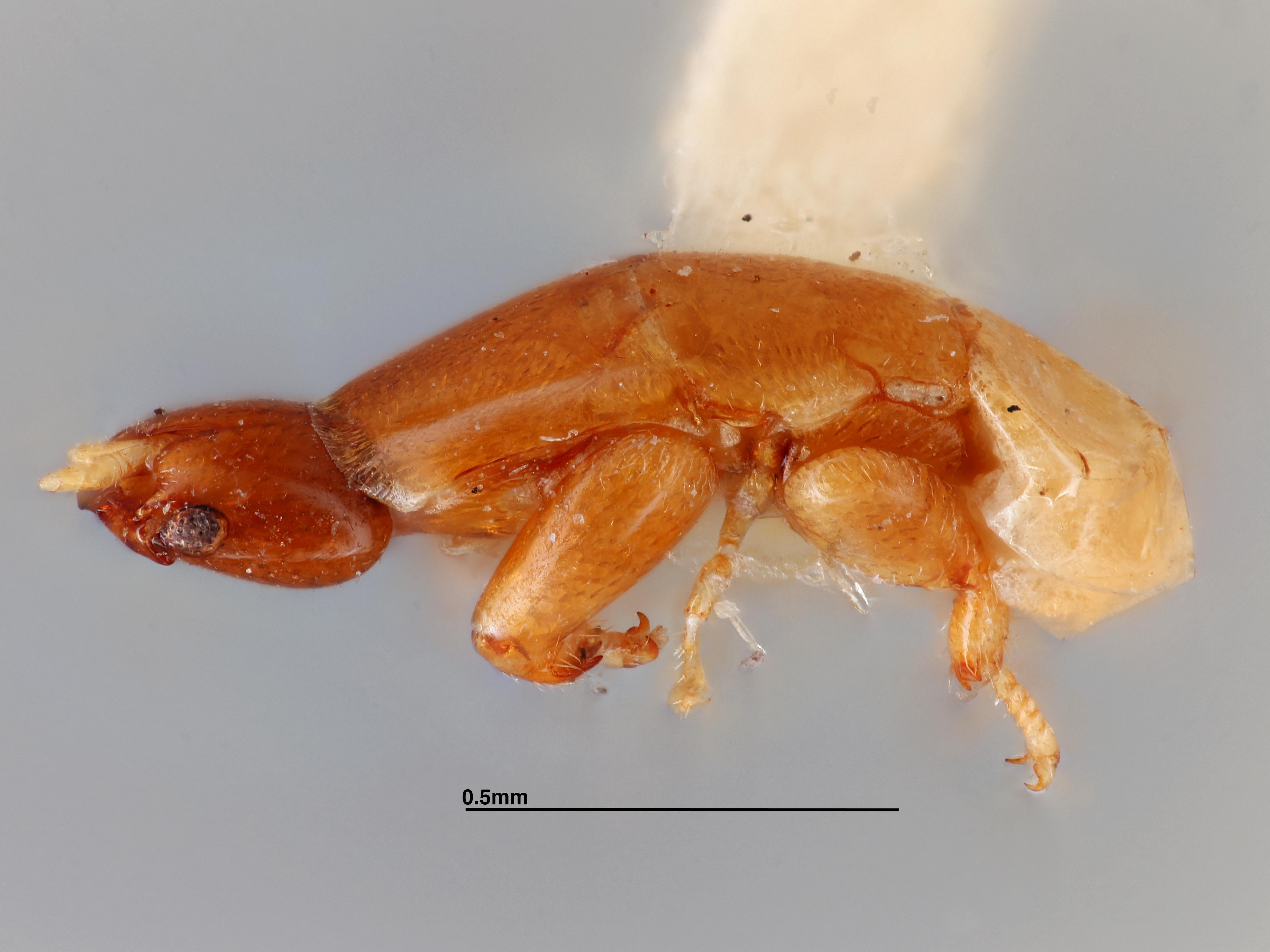
Geographic Distribution: Distributed across Florida of the United States, the Caribbean, El Salvador, Puerto Rico, and Mexico.
Identification: While females have wings, males are wingless and are found within the fig they were born. Males mate with the females while still within the fig, and they also chew a hole in the fig for the females to escape from the fig interior.
Plants commonly Visited: Ficus aurea
Forcipomyia hardyi (Chocolate Midge)
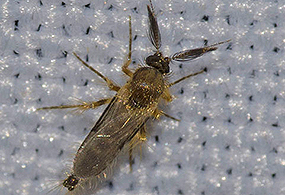
Geographic Distribution: Endemic to the Hawaiian Islands in the United States.
Identification: Adults: Uniformly dull gray-brown. Legs yellow to yellow-brown in color. Larva: Pale yellow brown with a brown head. Pupa: Pale brown
Size: Larva: (mature 4th instar) 4.2 mm. Pupa: 3.2 mm
Plants Commonly Visited: Cultivatived Theobroma cacao in Hawaii.
Tegeticula californica (Yucca Moth)
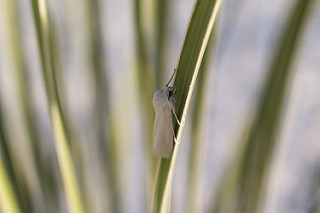
Geographic Distribution: Along a 40 km long coast of the southernmost California region.
Identification: Adult: White scales on head. Thorax has white scales and legs are medium to dark brown. All individuals regardless of sex have a narrow band of dark brown scales on costa from the base to the entire length. Underside of the Thorax is dark brown except for a tallow-white portion overlapping the hindwing. Hindwing is brown-gray. Underside is scaled brown-gray. Underside of abdomen is white to light tan.
Size: Wingspan: 23.4 - 25.5 mm in males, 27.5 - 30mm in females
Leptonycteris yerbabuenae (Lesser Long-nosed Bat)
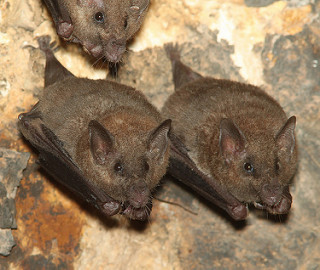
Geographic Distribution: Distributed from southern Arizona and New Mexico of the United States to Honduras and El Salvador.
Habitat: Commonly found in arid to semiarid regions below 18,000 ft
Identification: A leaf-nosed bat with an elongated snout. They have no externally visible tail. They have red-brownish fur that is short and dense. They weigh between 15 - 25 g and have short wings.
Size: Total Length: 81.8 mm
Plants Commonly Visited: Families: Asparagaceae, Cactaceae, Bombacaceae. Known Species: Carnegiea gigantean, Neobuxbaumia mezcalaensis, Neobuxbaumia tetetzo, Pachycereus pringlei, Stenocereus pectepectiniginum, Stenocereus stellatus
IUCN Redlist Conservation Status: Near Threatened
Apis mellifera (Honey Bee)
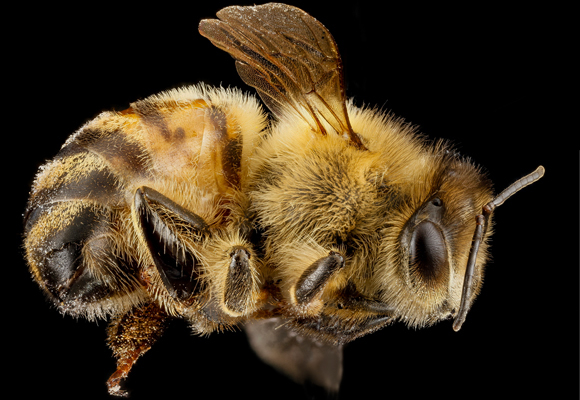
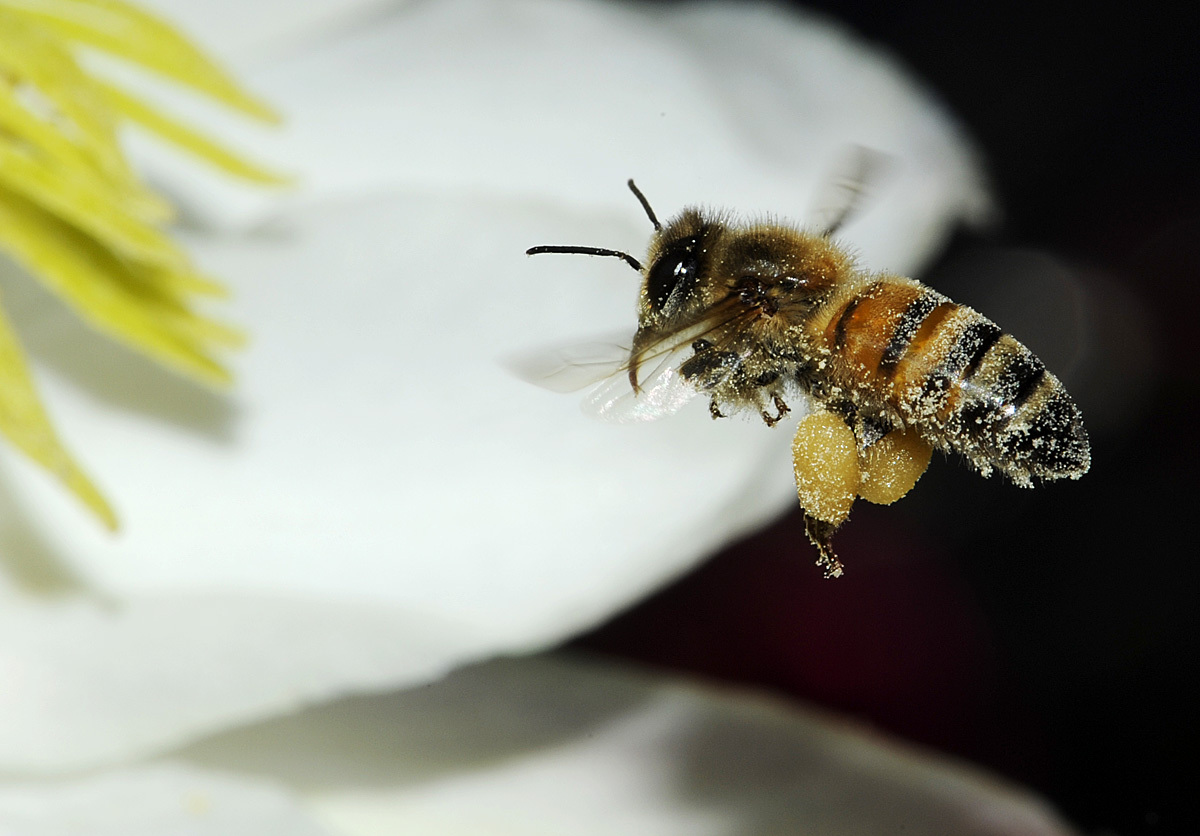
Geographic Distribution: Worldwide. Native to Europe.
Habitat: Nests in hollow trees or man-made structures.
Identification: Red/Brown with black bands and orange yellow rings on abdomen.
Size: 1 - 2 cm
Plants Commonly Visited: Pollen and nectar from a wide variety of blooming flowers.
Natureserve Conservation Status: GNR – Not Ranked
Bombus impatiens (Bumble Bee)
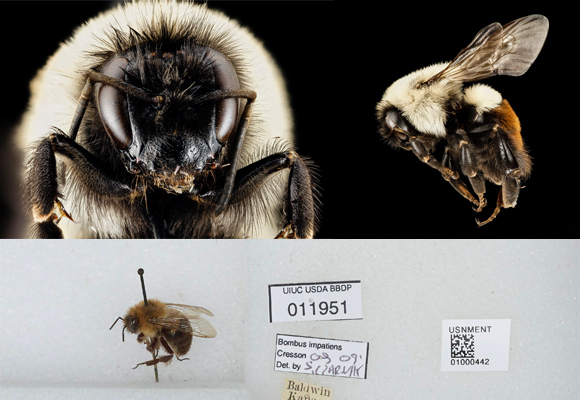
Geographic Distribution: Eastern North America, from Ontario to Maine and south to Florida. Common on Atlantic coast; much less common near the western edge of its range, from North Dakota to Texas.
Habitat: Very general, including intensively farmed areas, suburbs, and highly urban areas
Size: 17-21 mm
Identification: The female has dark hairs around the face, blond hair on the thorax and tergum one of the abdomen. Tergum two of the abdomen is entirely black. The legs have black hair. The males have light hair around the face and long antennae.
Plants Commonly Visited: Rhus copallinum, Arnoglossum atriplicifolium, Aster spp., Bidens aristosa, Cirsium vulgare, Eupatoriadelphus purpureus, Eupatorium spp., Euthamia graminifolia, Helenium autumnale, Helianthus spp., Liatris aspera, Ratibida pinnata, Silphium perfoliatum, Solidago spp., Vernonia missurica, Impatiens pallida, Chamaecrista fasciculate, Lobelia siphilitica, Lonicera dioica, Symphoricarpos orbiculatus, Chamaedaphne calyculata, Vaccinium spp., Dalea purpurea, Lespedeza hirta, Robinia pseudoacacia, Gentiana andrewsii, Ribes missouriense, Aesculus hippocastanum, Hydrophyllum spp., Agastache nepetoides, Lycopus americanus, Nepeta cataria, Prunella vulgaris, Teucrium canadense, Allium cernuum, Lythrum alatum, Rhexia virginica, Polemonium reptans, Persicaria pensylvanica, Dodecatheon meadia, Delphinium tricorne, Malus coronaria, Spiraea alba, Cephalanthus occidentalis, Agalinis tenuifolia, Aureolaria pedicularia, Pedicularis spp., Penstemon digitalis, Scrophularia marilandica, Veronicastrum virginicum,Solanum dulcamara, Staphylea trifolia, Verbena stricta
Naureserve Conservation Status: G5 – Secure
Eupeodes (Metasyrphus) americanus (Hoverfly)
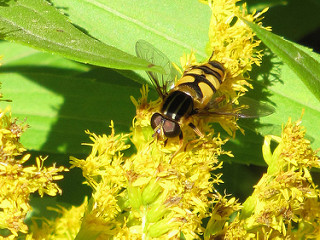
Identification: Yellow face with red to black eyes. Thorax is a metallic black with yellow hair along the sides laterally. Legs are a yellow color. Abdomen is an oval shape with alternating yellow and black bands.
Size: 7 - 11 mm
Plants Commonly Visited: Rhus aromatic, Rhus glabra, Asimina triloba, Chaerophyllum procumbent, Cryptotaenia Canadensis, Erigenia bulbosa, Heracleum maximum, Perideridia Americana, Taenidia integerrima, Achillea millefolium, Antennaria neglecta, Arctium lappa, Aster ericoides, Aster lanceolatus, Aster lateriflorus, Aster macrophyllus, Aster novae-angliae, Aster pilosus, Aster salicifolius, Bidens aristosa, Boltonia asterioides, Cirsium arvense, Erigeron annuus, Erigeron philadelphicus, Helianthus grosseserratus, Leucanthemum vulgare, Rudbeckia hirta, Solidago canadensis, Solidago juncea, Solidago nemoralis, Solidago ulmifolia, Arabis shortii, Rorippa teres, Sambucus canadensis, Symphoricarpos occidentalis, Stellaria media, Euonymus atropurpureus, Tradescantia virginiana, Cornus racemose, Echinocystis lobate, Diospyros virginiana, Melilotus alba, Ribes cynosbati , Ribes missouriense, Hamamelis virginiana, Hydrangea arborescens, Teucrium canadense, Sassafras albidum, Allium canadense, Tofieldia glutinosa, Rhexia virginica, Gaura biennis, Oenothera pilosella, Sanguinaria Canadensis, Parnassia glauca, Phlox glaberrima, Persicaria pensylvanica, Claytonia virginica, Enemion biternatum, Hepatica acutiloba , Ranunculus fascicularis, Ranunculus septentrionalis, Ceanothus americanus, Rhamnus lanceolate, Amelanchier arborea, Crataegus mollis, Prunus americana, Rosa carolina, Rosa setigera, Zanthoxylum americanum, Salix amygdaloides, Salix discolor, Salix humilis, Salix interior , Salix nigra , Salix rigida, Agalinis tenuifolia, Mimulus ringens, Verbascum Thapsus, Smilax tamnoides hispida, Tilia americana
Natureserve Conservation Status: GNR – Not Yet Ranked
Resources
NatureServe Explorer
Encyclopedia of Life
Bureau of Land Management: National Seed Strategy
Hawaiian Entomological Society: Forcipomyia hardyi (Diptera: Ceratopogonidae), a Potential Pollinator of Cacao (Theobroma cacao) Flowers in Hawaii
Missouri Botanical Garden
National Park Service: Pollinators - Chocolate midge
The Royal Society Publishing: Crop domestication facilitated rapid geographical expansion of a specialist pollinator, the squash bee Peponapis pruinosa
All About Birds: Anna's Hummingbird
Zoological Journal of the Linnean Society: Phylogeny of the pollinating yucca moths, with revision of Mexican species (Tegeticula and Parategeticula; Lepidoptera, Prodoxidae)
BioOne Digital Library
SciELO: Frugivory diet of the lesser long-nosed bat (Leptonycteris yerbabuenae), in the Tehuacán Valley of central Mexico
Credits
Science Advisors
Dr. William Carromero is the National Botanist for the USDA Forest Service. Dr. Carromero started his career with the Forest Service in 2004 as the District Botanist at the Ocala National Forest in Florida. From 2010 - 2015, he became the Forest Ecologist at the Ozark-St. Francis National Forests where he led the Ozark Highlands Ecosystem Collaborative Restoration project. The project was awarded a Chief’s Honor Award in Sustaining National Forests and Grasslands in 2014. Dr. Carromero also coordinated the Joint Chief’s Initiative for the Western Arkansas Woodland Restoration Project. Dr. Carromero’s work at the Forest Service national headquarters includes support and implementation of native plant material policy for revegetation and restoration work to improve ecosystem diversity and support pollinators.

Dr. Gary Krupnick is the head of the Plant Conservation Unit in the Department of Botany, National Museum of Natural History at the Smithsonian Institution in Washington, D.C. His research examines how data from herbarium specimens can be used in assessing the conservation status of plant species. Gary serves on the Steering Committee of the North American Pollinator Protection Campaign.
Photo Credits
Plant and pollinator specimen images courtesy of the U.S. National Herbarium, U.S. National Entomological Collection, and USGS Bee Inventory and Monitoring Lab:
Smithsonian National Museum of Natural History: Department of Botany Collections
Smithsonian National Museum of Natural History: Department of Entomology Collections
Flickr: USGS Bee Inventory and Monitoring Lab
About the Artist - Lindsay Wright-Durko
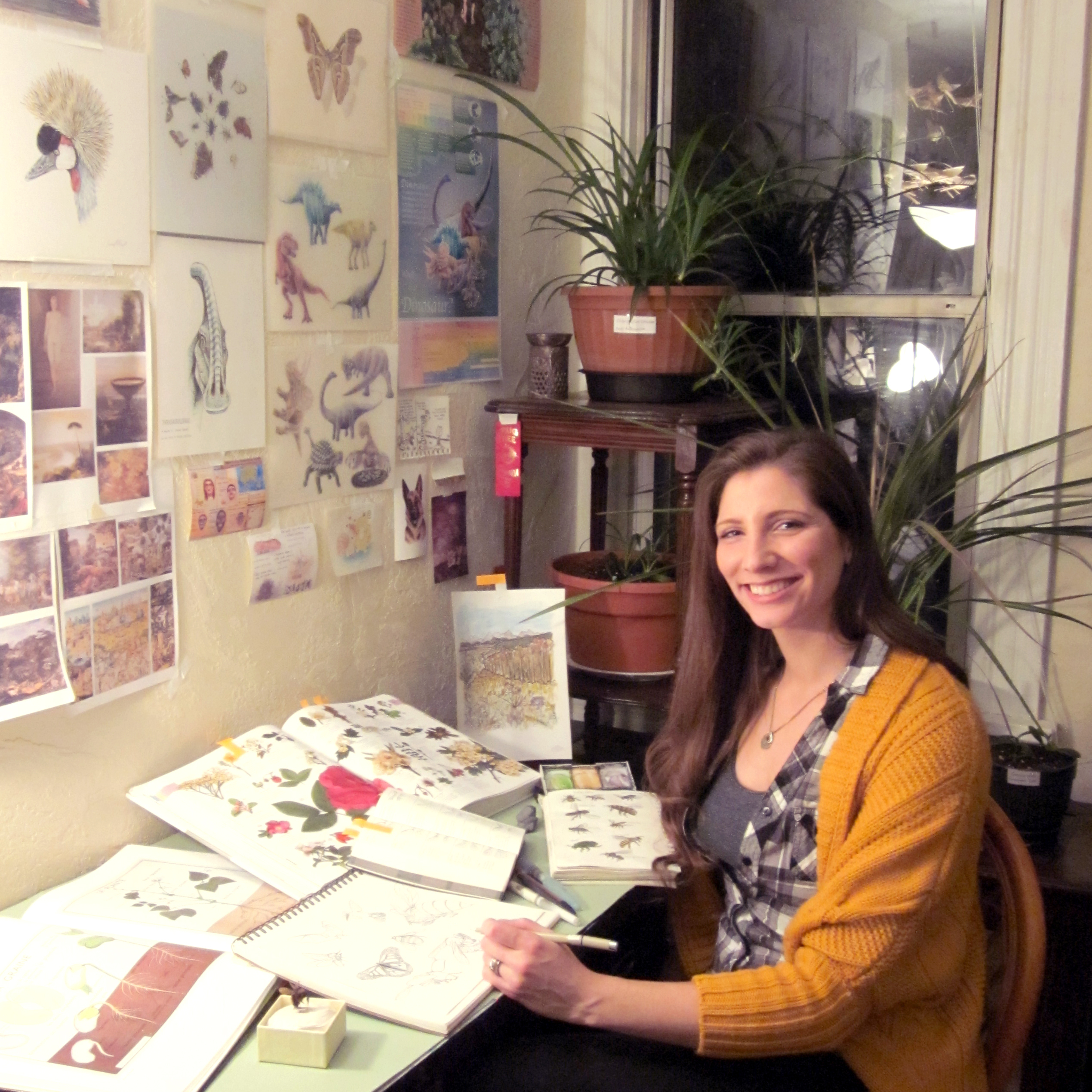
Lindsay Wright has been cultivating a keen observational eye since she was young. She has always loved exploring nature and putting what she saw on paper. This desire for drawing realistically with scientific themes developed through schooling as Lindsay earned her degree in Studio Arts with a minor in Biology at the University of Pittsburgh. Typically working in color pencil to bring out the bright colors and detail of nature, Lindsay uses knowledge acquired through taking classes in animal physiology, vertebrate morphology, and dinosaur evolution to draw accurate illustrations. Lindsay was a work-study student in the Education Department of the Carnegie Museum of Natural History throughout her years at Pitt. This opened her up to many opportunities including working with paleontologist Dr. Matthew Lamanna to reconstruct the skeleton of a new species of Titanosaur. As part of her pursuit of a career in illustration, Lindsay became a member of the Guild of Natural Science Illustrators and the Pittsburgh Society of Illustrators. Lindsay is certified in Science Illustration from California State University, Monterey Bay and completed an internship in Art Direction with Zoobooks, Kid’s Magazine. Currently living in Pittsburgh, she shares her artwork with the community through fairs and festivals, and works as a freelance science illustrator for such clients as the National Aviary and the Smithsonian Science Education Center.
Process:
As soon as I heard the topic of this year’s Pollinator Partnership poster, ideas starting flowing through my head. How do I show the importance of pollinators to our food security and the health of our ecosystems? I started sketching flowers and food and seeds and landscapes, people harvesting seeds in the landscape, pollinators flying around the flowers... It was a whirlwind of ideas, but all of those ideas needed to be translated into a single poster.
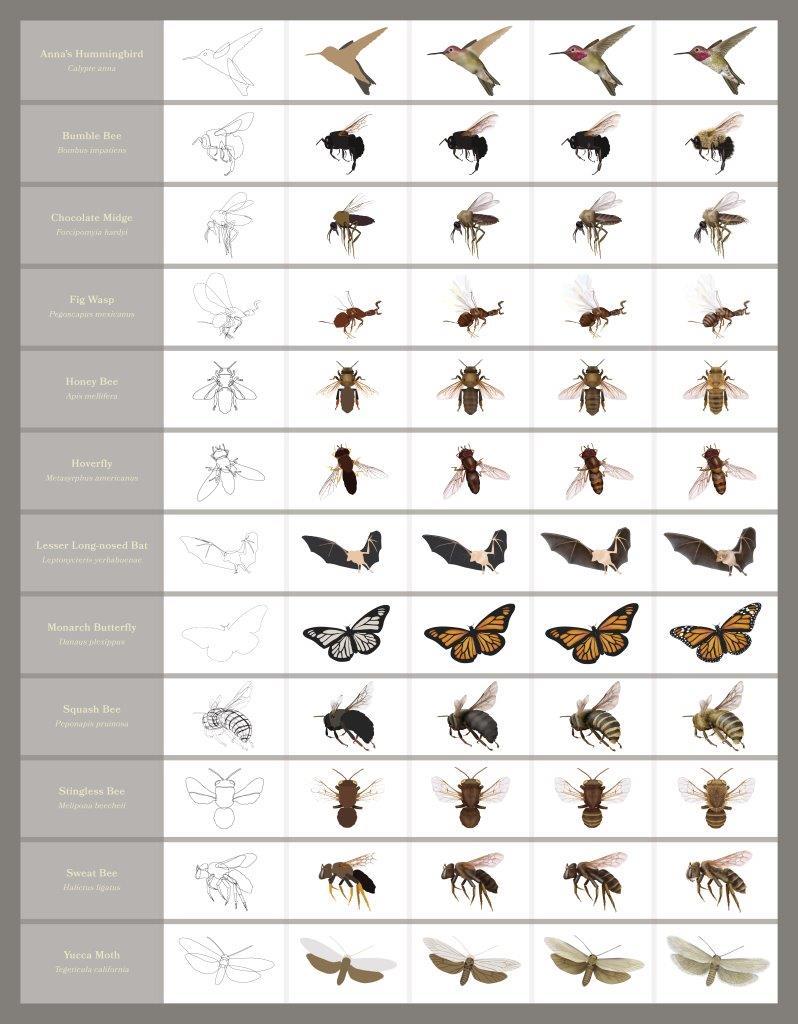
Once I was selected to be the artist, the concept of the poster started to solidify. The sketched artwork changed as the decision was made to use plants and pollinators native to North America. This gave the poster a more succinct story, and a story more relatable to the intended audience. Our beautifully diverse continent, that contains almost every ecosystem, is illustrated as one landscape in the center circle of the poster showing the importance of pollinators to all habitats, night and day.
Next came the intense research. I wanted to match each pollinator with at least one plant. Some stories I chose to feature are about a special relationship between a plant and its pollinator, such as the chocolate and its midge, while other stories show the importance of one pollinator to a variety of plants, like the bumble bee or hoverfly. Most of my reference images were gathered from online sources and the USGS Bee Inventory and Monitoring Lab’s Flikr page. The exception was the fig wasp, whose reference image was provided to me directly from a 100-year-old specimen in the Smithsonian Institution’s Hymenoptera Unit at the National Museum of Natural History!
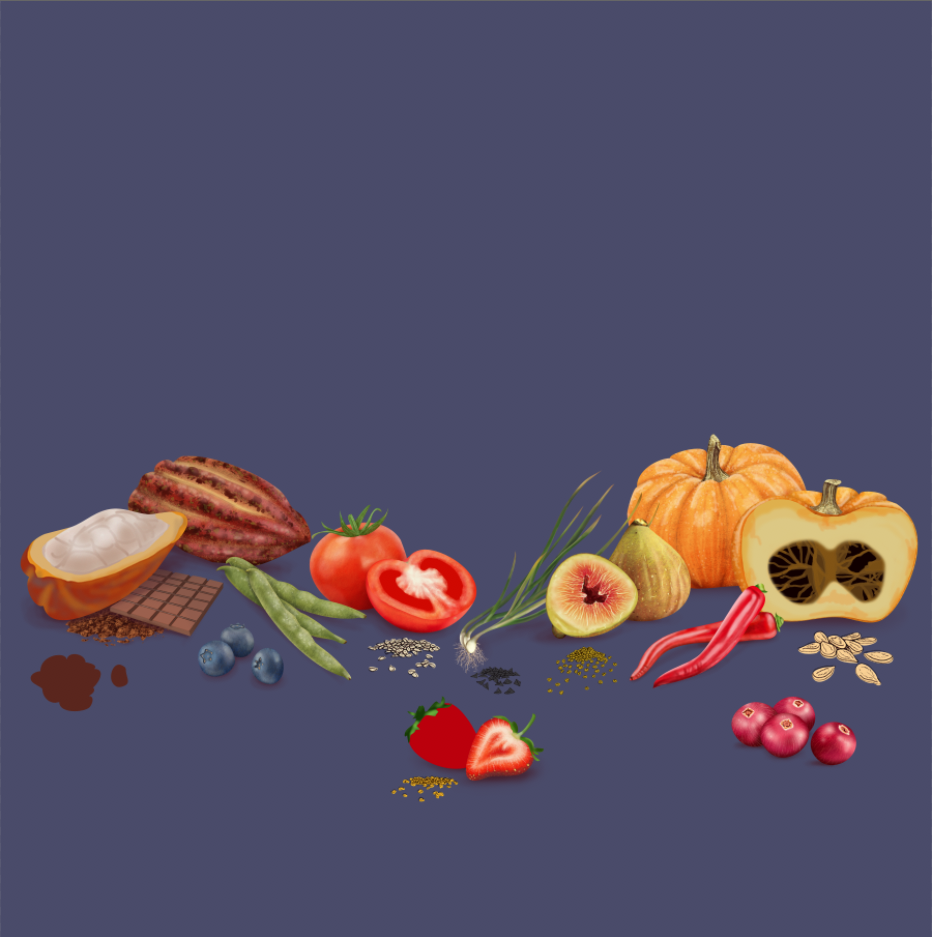
The drawings of the pollinator and plant species were done as multi-layered photoshop paintings. In this digital format, I can keep the layers separate to make easier modifications at any time, which assures accuracy. I start with a vector outline of each component of the pollinator, flower, or piece of food. These outlines are used as clipping masks in photoshop, which makes it impossible to color out of the lines. Each clipping mask makes one part, such as the wing, head, stem, petal, rind, and seed; and each part has a layer for color, texture, pattern, and shading. Every illustration was then carefully placed in the poster layout in Indesign, with a circular middle to emphasize the connection of everything. Above the circle, the flowers and their pollinators; below, the food and its seeds; to the left, a simple depiction of a plant’s life cycle showing which part of the plant we eat when consuming various foods; and to the right, seed capsules as part of the National Seed Strategy for Rehabilitation and Restoration. The poster design, much like nature, has a lot of great little stories if you just look around it!
See more from Lindsay at lindscience.com
Other Artists:
